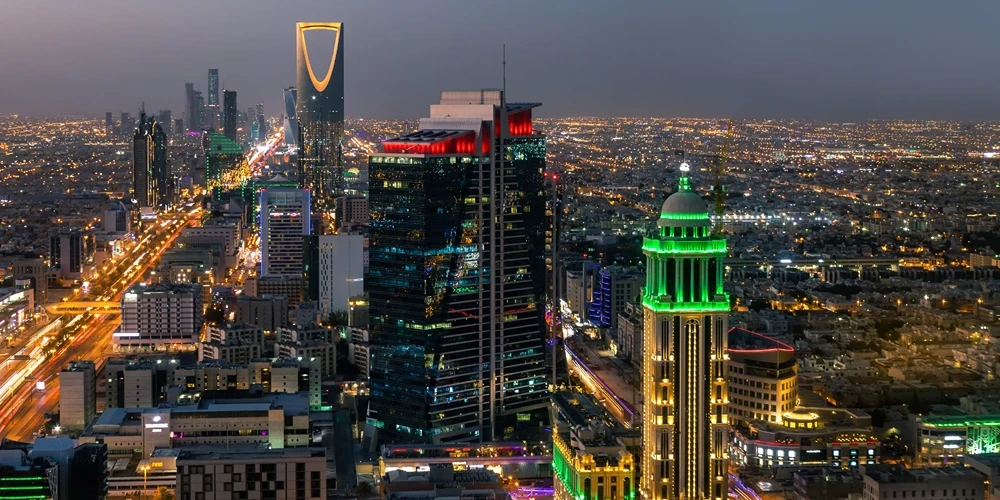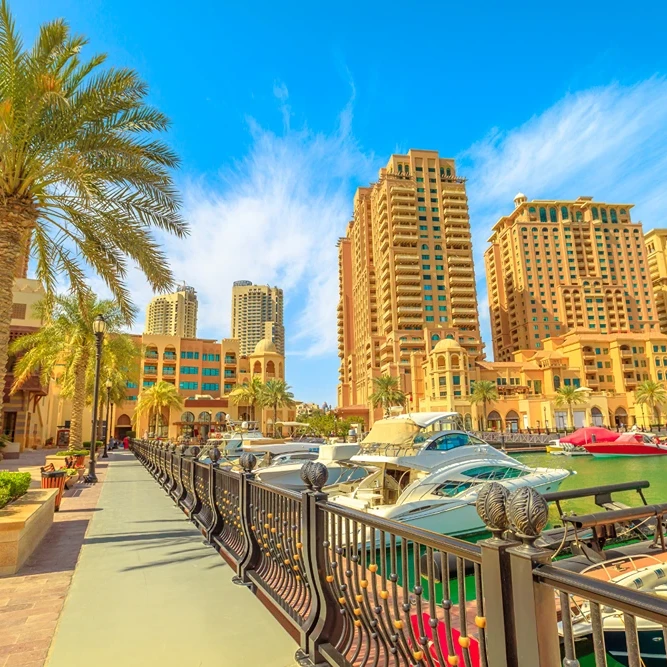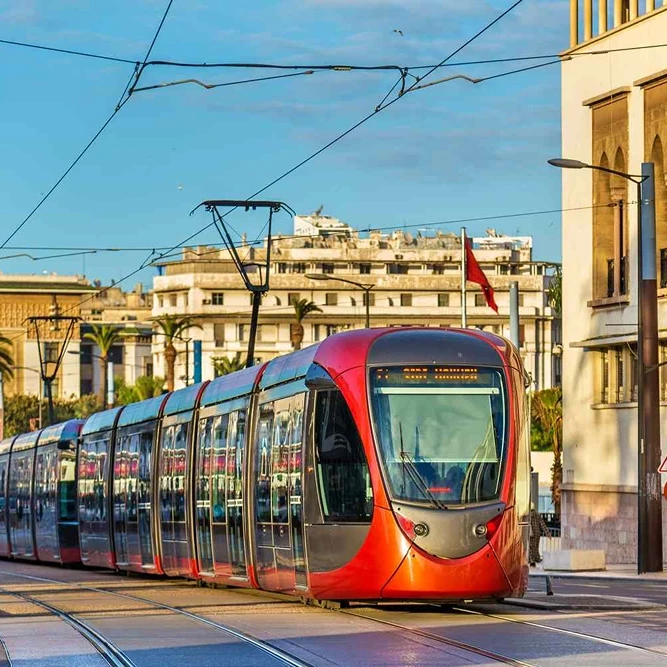Is Saudi Arabia on your travel bucket list but you’re not sure where to start? While the country is famed for its religious landmarks, there’s so much more to explore. From the historical fortresses of Riyadh to the contemporary art scenes in Jeddah, Saudi Arabia offers a rich tapestry of experiences. Dive into our detailed guide on the best places to visit in Saudi Arabia and discover why this Middle Eastern gem deserves a top spot on your travel itinerary. Get ready to uncover the top attractions, must-see sites, and hidden gems awaiting you in this fascinating kingdom.
Table of Contents
Best Places to Visit in Riyadh
Riyadh, the capital of Saudi Arabia, serves as the country’s political and administrative hub. Known for its blend of modernity and tradition, Riyadh offers a plethora of attractions that showcase its rich history and rapid development.
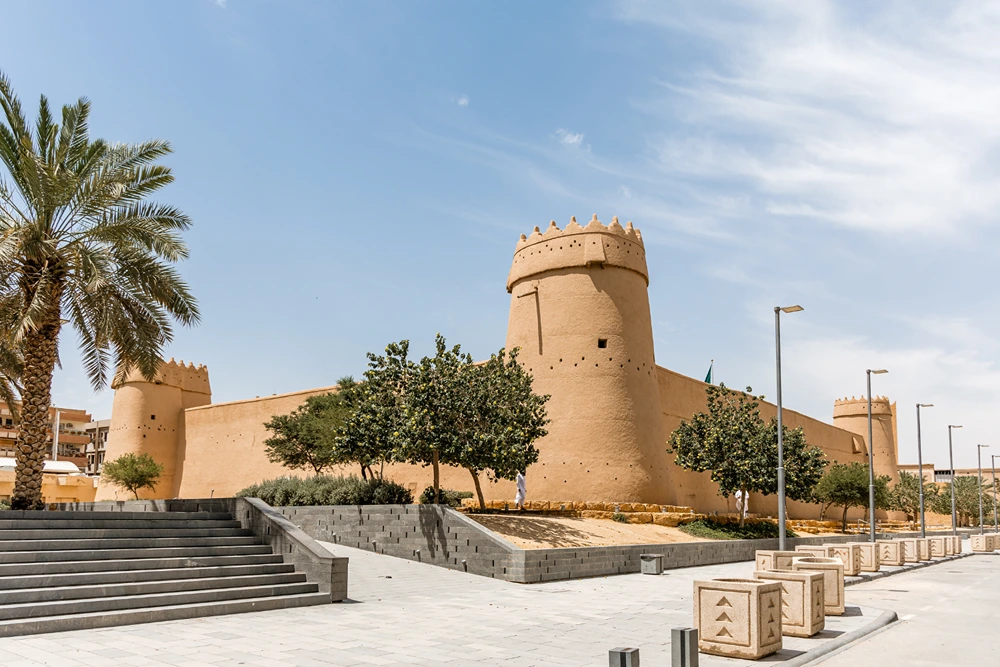
Al Masmak Fort
Al Masmak Fort, dating back to 1865, is a significant historical landmark in Riyadh. This clay and mud-brick fortress played a pivotal role in the recapture of Riyadh by King Abdulaziz in 1902. Visitors can explore various artifacts, including traditional weapons and maps, providing a glimpse into the region’s storied past.
King Abdulaziz Historical Center
The King Abdulaziz Historical Center is a comprehensive cultural complex featuring eight main galleries. The center delves into Saudi Arabia’s history, culture, and development, with exhibits ranging from ancient artifacts to modern achievements. It serves as an educational resource and a cultural touchstone for both locals and tourists.
Al Faisaliah Center
Al Faisaliah Center stands out with its striking 247-meter high tower. One of the top tourist spots in Riyadh, it offers a restaurant with a 360-degree view of the city, making it an ideal location for dining and sightseeing. The tower’s unique design and panoramic views make it a must-see for visitors.
Other notable attractions in Riyadh include:
- Riyadh Zoo: Home to a variety of animal species, perfect for family visits.
- National Museum: Offers extensive exhibits on Saudi Arabia’s history and culture.
- Kingdom Center: Known for its Sky Bridge, providing stunning city views.
- Riyadh Park Mall: A modern shopping destination with various entertainment options.
- Diriyah: A UNESCO World Heritage site showcasing the history of the Saudi state.
By visiting these sites, tourists can experience the historical depth and modern vibrancy that define Riyadh.
Must-Visit Sites in Jeddah
Jeddah, a cosmopolitan city on the Red Sea coast, is known for its vibrant art scene, stunning architecture, and thrilling attractions. The best time to visit Jeddah is from October to March when the weather is pleasant for exploring its many sites.
Athr Gallery
Since its inception in 2009, Athr Gallery has been a cornerstone for contemporary art in Saudi Arabia. It showcases works from both local and international artists, promoting cultural exchange and artistic innovation. Visitors can enjoy a diverse range of exhibitions, from paintings to multimedia installations, making it a must-see for art enthusiasts.
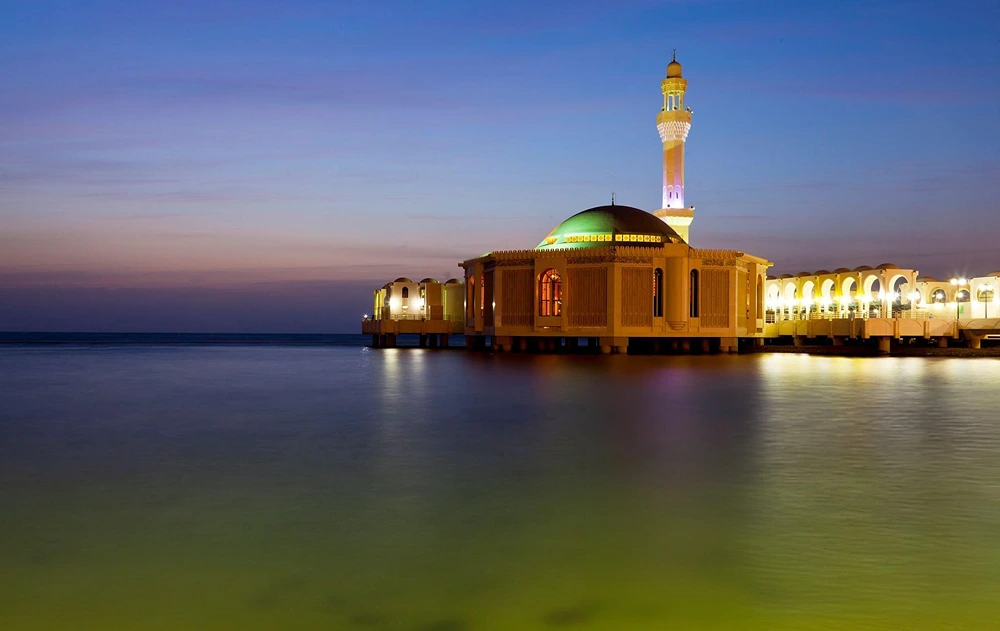
Jeddah Floating Mosque
The Jeddah Floating Mosque, also known as Al Rahma Mosque, is renowned for its unique architecture. Built on stilts over the Red Sea, it appears to float on water, especially during high tide. The mosque combines traditional Islamic design with modern elements, featuring a striking white exterior and a serene interior, making it a popular spot for both worship and photography.
Al Shallal Theme Park
Al Shallal Theme Park offers an array of exciting rides and attractions for all ages. The park features roller coasters, a pirate ship, and an artificial lake where visitors can enjoy boat rides. With its blend of adrenaline-pumping activities and family-friendly fun, Al Shallal is a top destination for those seeking entertainment in Jeddah.
Other significant attractions in Jeddah include:
- King Fahd’s Fountain: The tallest fountain in the world, shooting water up to 312 meters.
- Al Balad: The historic district known for its traditional buildings and bustling souks.
- Red Sea Mall: One of the largest shopping centers in Jeddah, offering a variety of retail and dining options.
- Fakieh Aquarium: Home to diverse marine life and offering educational exhibits and live shows.
By visiting these sites, travelers can experience the rich cultural heritage and modern attractions that make Jeddah a unique destination.
Exploring the Wonders of Mecca
Mecca holds immense religious significance as the holiest city in Islam. Every year, millions of Muslims undertake the pilgrimage to Mecca, known as Hajj, to fulfill one of the Five Pillars of Islam.
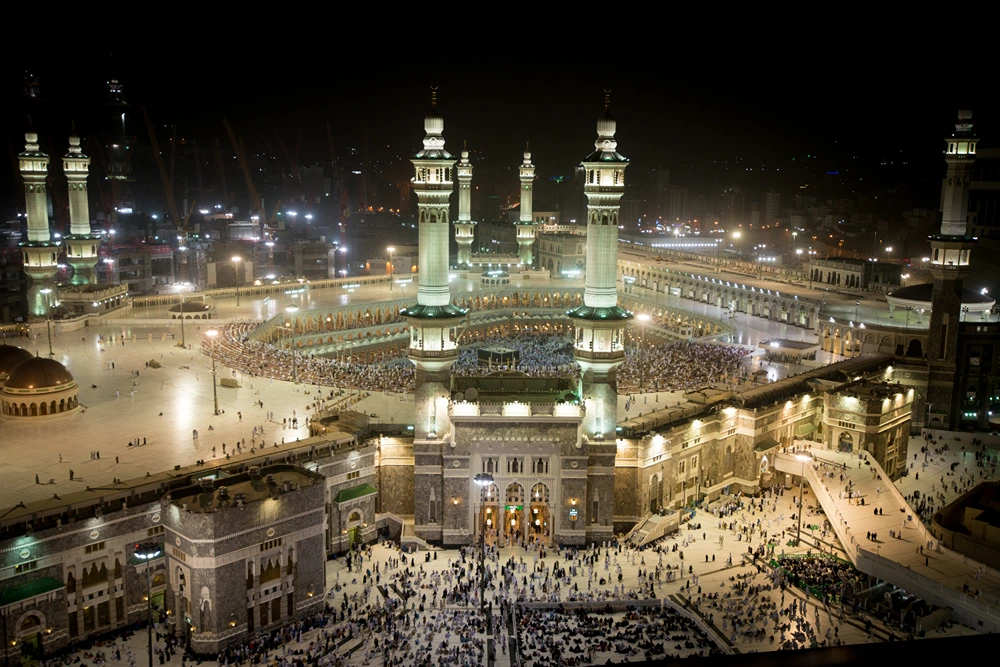
Masjid al-Haram
What is the largest mosque in the world?
Masjid al-Haram is the world’s largest mosque, encompassing an area of 356,800 square meters. This grand mosque surrounds the Kaaba and hosts millions of worshippers, especially during the Hajj pilgrimage. Its vast size and architectural splendor make it a pivotal landmark in Islamic history.
The Kaaba
What is the cubical structure at the center of Masjid al-Haram?
The Kaaba is a cubical structure located at the center of Masjid al-Haram. It is constructed from granite and features a door made of gold, symbolizing its significance in Islam. The Kaaba serves as the qibla, the direction Muslims face during prayers, underscoring its spiritual importance.
Other significant Islamic sites in Mecca include:
- Mount Arafat: Known as the “Mountain of Mercy,” it is the site where Prophet Muhammad delivered his Farewell Sermon.
- Jabal al-Nour: This mountain houses the Hira Cave, where Prophet Muhammad received his first revelation.
- Mina: A neighborhood in Mecca that accommodates millions of pilgrims during the Hajj, known for its Tent City.
By visiting these sacred sites, pilgrims and visitors can gain a deeper understanding of Islamic history and spirituality.
Top Attractions in Al-Ula
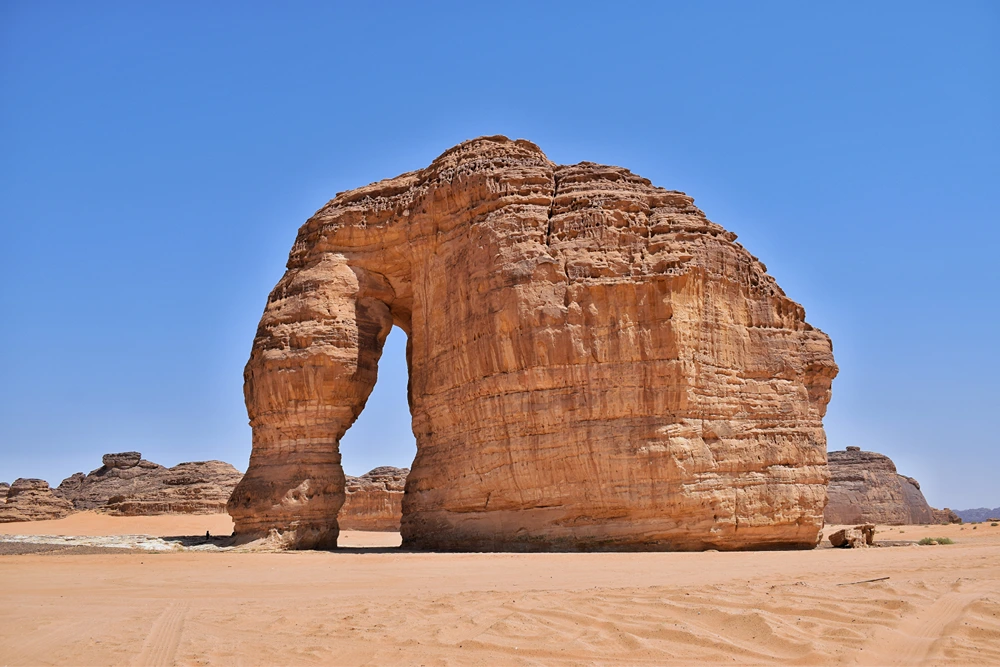
Al-Ula is a treasure trove of historical and archaeological significance, offering visitors a glimpse into ancient civilizations. Best visited from October to April, this region is known for its stunning landscapes and well-preserved heritage sites.
Al Ula Heritage Village
Al Ula Heritage Village is an essential stop for those interested in the rich history of Saudi Arabia. The village showcases traditional mud-brick houses and ancient ruins, providing insights into the lifestyle of its former inhabitants. Walking through the narrow alleys, visitors can explore various historical structures that have stood the test of time.
Elephant Rock
Elephant Rock is one of Al-Ula’s most iconic natural landmarks. What makes Elephant Rock unique? This geological marvel resembles an elephant with its trunk touching the ground. Over millennia, wind and water erosion have sculpted this fascinating formation. It’s a popular spot for photography and offers breathtaking views, especially at sunset.
Hegra (Mada’in Saleh)
Hegra, also known as Mada’in Saleh, is an archaeological site that serves as Saudi Arabia’s first UNESCO World Heritage Site. What is the entrance fee for Hegra? The entrance fee for Hegra is 95 SAR (~25.30 USD). Visitors can explore over 100 well-preserved tombs with intricate facades carved into sandstone outcrops. Guided tours are available, offering deeper insights into the Nabatean civilization that once thrived here.
Other notable attractions in Al-Ula include:
- Maraya Concert Hall: A mirrored building in the desert that hosts various cultural events and performances.
- Jabal Ikmah: Known as an open-air library, this site features numerous ancient inscriptions on rock faces.
- Al Gharameel: Famous for its stunning rock formations and stargazing opportunities.
By exploring these sites, visitors can truly appreciate the historical depth and natural beauty that Al-Ula has to offer.
Discovering the Beauty of Abha
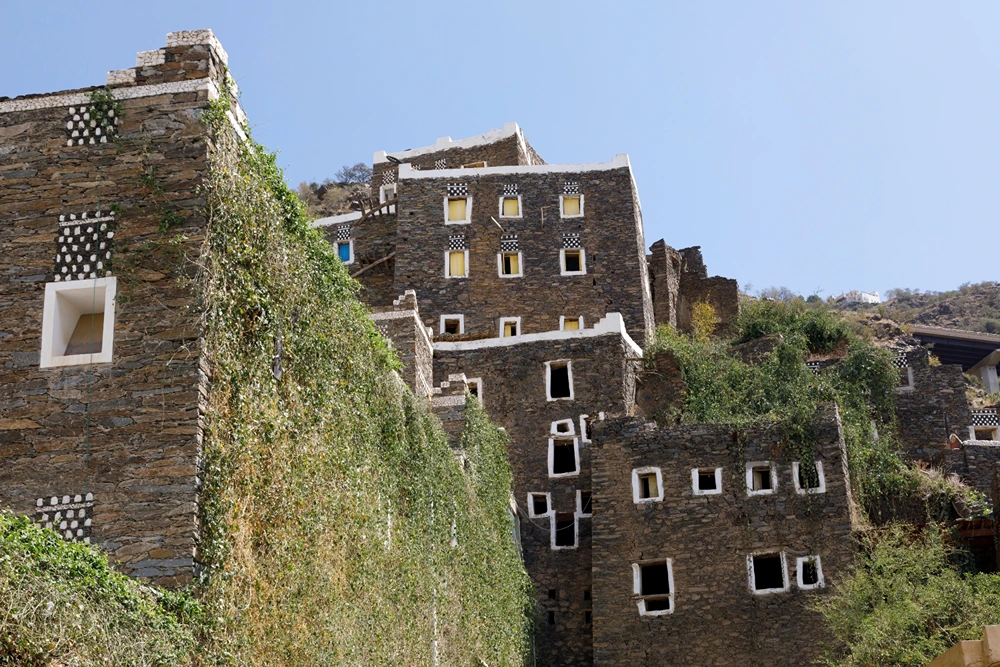
Abha, nestled in the Asir Mountains, offers a unique blend of natural beauty and cultural richness. Best visited from February to mid-May and September to November, Abha is an ideal destination for those seeking scenic landscapes and cultural experiences.
Aseer Regional Museum
What is the cultural significance of Aseer Regional Museum? The Aseer Regional Museum is a cornerstone of Abha’s cultural heritage. It houses an extensive collection of artifacts, including traditional clothing, jewelry, and tools that reflect the region’s history and traditions. Visitors can explore exhibits that delve into the customs, architecture, and daily life of the Asir region, providing a comprehensive cultural experience.
Jebel Al Akhdar
What makes Jebel Al Akhdar a must-visit in Abha? Jebel Al Akhdar, also known as the Green Mountain, offers breathtaking scenic views. The mountain is dotted with small cafes, allowing visitors to enjoy a cup of coffee while taking in panoramic vistas of the city below. This site is particularly popular for evening visits, as the mountain’s illumination creates a magical atmosphere.
Asir National Park
Why is Asir National Park important for biodiversity? Asir National Park is a haven for nature enthusiasts, home to over 300 rare and native wildlife species. The park offers numerous hiking trails that meander through diverse ecosystems, from lush forests to rugged mountains. Visitors can experience the park’s rich biodiversity, which includes unique flora and fauna, making it a prime spot for wildlife observation and outdoor activities.
Exploring these attractions, travelers to Abha can immerse themselves in the natural beauty and cultural heritage that define this picturesque region.
Historical and Cultural Landmarks in Dammam
Dammam, located in the Eastern Province of Saudi Arabia, stands out as a significant cultural hub. Known for its rich history and vibrant cultural scene, Dammam offers numerous attractions that provide visitors with a comprehensive understanding of the region’s heritage and modern development.
Dammam Corniche
What is Dammam Corniche?
Dammam Corniche is a scenic waterfront area stretching from Aziziah Beach to Tarot Island. It offers a picturesque setting for leisurely walks, picnics, and various outdoor activities. The Corniche is lined with beautifully landscaped gardens, playgrounds, and cafes, making it a popular spot for families and tourists alike. Visitors can enjoy stunning views of the Arabian Gulf and engage in various water sports, adding to the Corniche’s allure.
Half Moon Bay
What makes Half Moon Bay a notable attraction?
Half Moon Bay is renowned for its tranquil beach and artificial reef, making it a prime spot for diving enthusiasts. The bay’s calm waters and sandy shores provide an ideal environment for swimming, sunbathing, and beach activities. The artificial reef attracts a variety of marine life, offering a unique underwater experience for divers. With its serene ambiance, Half Moon Bay is a perfect getaway for those seeking relaxation and adventure.
Other notable historical landmarks in Dammam include:
- Heritage Village: A cultural complex showcasing traditional Saudi architecture, crafts, and artifacts.
- King Abdulaziz Center for World Culture (Ithra): A landmark building offering interactive exhibits on art, science, and culture.
- Dammam Regional Museum: Features exhibits on the region’s history, including archaeological finds and traditional artifacts.
- Tarout Castle: An ancient fortress on Tarot Island, providing insights into the area’s historical significance.
By exploring these sites, visitors can immerse themselves in the historical and cultural richness that defines Dammam.
Best Natural Attractions in Saudi Arabia
Saudi Arabia boasts diverse natural landscapes, from pristine islands to majestic deserts, offering a myriad of outdoor activities and adventure opportunities for enthusiasts.
Umm Al-Qamari Island
What is Umm Al-Qamari Island known for?
Umm Al-Qamari Island is renowned for its rich biodiversity and as a haven for migratory birds. Located in the Red Sea, this island is a protected area that supports various species of flora and fauna. Birdwatchers and nature lovers can witness an array of seabirds and other wildlife, making it a prime destination for those interested in ecological tourism.
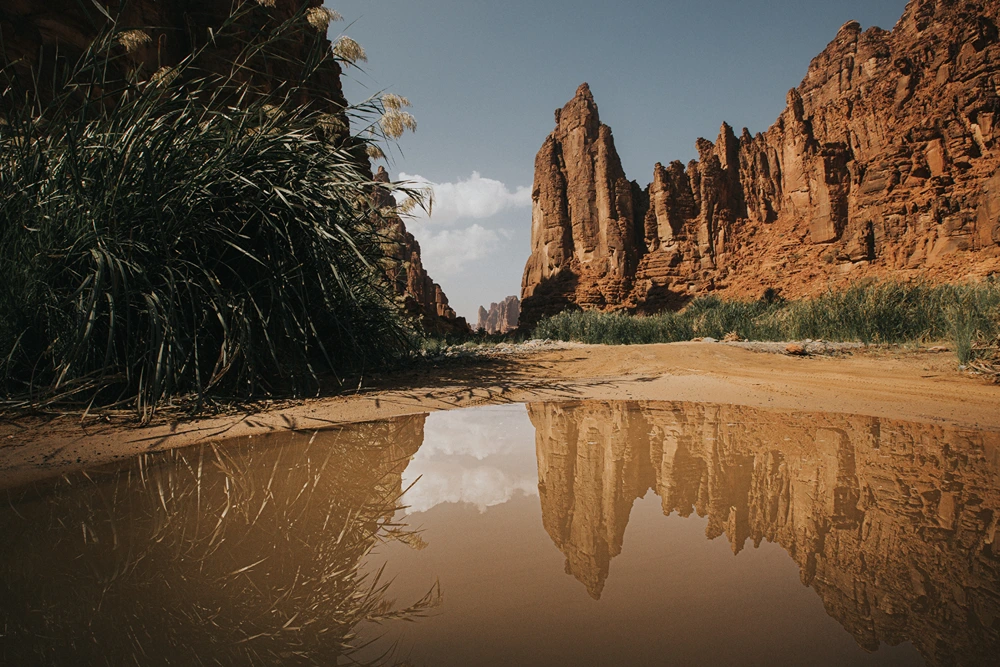
Wadi Al Disah
What makes Wadi Al Disah a must-visit?
Wadi Al Disah, situated in the Tabuk region, is celebrated for its stunning landscapes and scenic beauty. Accessible by 4×4 vehicles, this wadi features towering red sandstone cliffs, lush palm groves, and clear springs. Visitors can explore the wadi through hiking trails or guided tours, offering an immersive experience of the natural splendor and tranquility of this unique location.
The Edge of the World
What is the Edge of the World?
The Edge of the World, located near Riyadh, is famous for its dramatic cliffs that offer breathtaking views over an endless sea of desert. This natural wonder is part of the Tuwaiq Escarpment, and its sheer drop-offs provide a sense of standing at the edge of the world. The site is popular for hiking and guided tours, which provide insights into the geological and cultural history of the area.
Other notable natural attractions in Saudi Arabia include:
- Farasan Islands: Known for their coral reefs and marine life, ideal for diving and snorkeling.
- Jebel Fihrayn: Another part of the Tuwaiq Escarpment, offering stunning rock formations and hiking opportunities.
- Al Ahsa Oasis: A UNESCO World Heritage site known for its lush palm groves and historical significance.
Exploring these natural attractions allows visitors to experience the breathtaking beauty and ecological diversity that Saudi Arabia has to offer.
Top Cultural Sites to Visit in Saudi Arabia
Saudi Arabia’s cultural richness is reflected in its diverse heritage sites, which offer deep insights into the kingdom’s history and traditions. From religious landmarks to museums and heritage villages, these sites are must-visit destinations for those interested in the cultural tapestry of the region.
Al-Masjid an-Nabawi
What is the significance of Al-Masjid an-Nabawi?
Al-Masjid an-Nabawi, located in Medina, is one of the holiest sites in Islam. It was established by the Prophet Muhammad and serves as his final resting place. The mosque is renowned for its immense size and architectural beauty, featuring the iconic Green Dome and intricately designed minarets. It is a central place of worship and pilgrimage, drawing millions of visitors annually who seek spiritual connection and historical understanding.
Al Tayebat International City Museum
What can visitors expect at Al Tayebat International City Museum?
Al Tayebat International City Museum, situated in Jeddah, showcases a vast collection of artifacts that span Saudi Arabia’s history and culture. The museum is housed in a building designed to resemble traditional Hijazi architecture, adding to its cultural ambiance. Exhibits include ancient manuscripts, traditional clothing, and historical artifacts, providing a comprehensive overview of the region’s rich heritage. Visitors can explore various themed sections that cover different aspects of Saudi Arabian life, from pre-Islamic times to the present.
Ushaiqer Heritage Village
What makes Ushaiqer Heritage Village historically valuable?
Ushaiqer Heritage Village, located near Riyadh, is a well-preserved settlement that offers a glimpse into traditional Saudi Arabian life. The village is characterized by its mud-brick houses, narrow alleyways, and historical buildings that have been meticulously restored. Ushaiqer serves as a living museum, where visitors can experience the architectural styles, crafts, and daily activities of the past. The village also hosts cultural events and festivals, making it a vibrant destination for those interested in the kingdom’s historical and cultural legacy.
By visiting these cultural sites, travelers can gain a deeper appreciation for the historical and spiritual heritage that shapes Saudi Arabia.
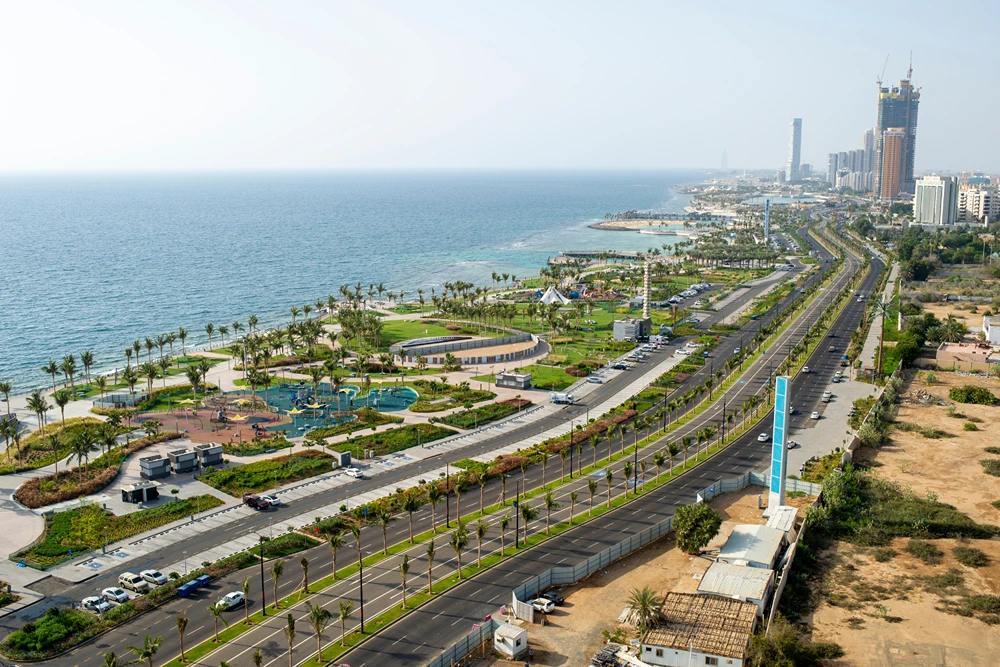
Best Time to Visit Saudi Arabia
Choosing the right time to visit Saudi Arabia can significantly enhance your travel experience. The country’s diverse climate means that some cities are best enjoyed during specific months to avoid extreme temperatures and enjoy pleasant weather.
Best Times to Visit Key Cities
| City | Best Time to Visit |
|---|---|
| Riyadh | November to March |
| Jeddah | October to March |
| Mecca | November to March |
| Abha | February to mid-May, September to November |
Timing your visit to these cities during the recommended periods ensures comfortable weather for exploring outdoor attractions, historical landmarks, and cultural sites.
Final Words
Exploring Saudi Arabia offers an enriching journey through diverse landscapes, historic sites, and vibrant cities. From Riyadh’s historical and cultural landmarks to Jeddah’s modern art and breathtaking mosques, the country has something for every traveler.
Mecca’s religious significance, Al-Ula’s archaeological wonders, and Abha’s natural beauty are just a few highlights. Each city presents unique attractions that capture the heart of Saudi culture and history.
Visiting the best places to visit in Saudi Arabia ensures a memorable experience, leaving visitors with a deeper appreciation of this fascinating destination.
FAQ
What is the most visited place in Saudi Arabia?
The most visited place in Saudi Arabia is the Masjid al-Haram in Mecca, the world’s largest mosque and a significant religious site for Muslims.
Which is the most beautiful city in Saudi Arabia?
Riyadh is often considered the most beautiful city in Saudi Arabia, featuring a blend of modern architecture and historical landmarks like Al Masmak Fort and King Abdulaziz Historical Center.
Is Saudi Arabia friendly to tourists?
Yes, Saudi Arabia is friendly to tourists, offering numerous attractions, modern amenities, and cultural experiences. The Saudi government has also eased visa regulations to promote tourism.
What is the new tourist spot in Saudi Arabia?
The newest tourist spot in Saudi Arabia is Al-Ula, known for its archaeological sites like Hegra (Mada’in Saleh) and the striking rock formation, Elephant Rock.
Top 10 beautiful places in Saudi Arabia
- Masjid al-Haram, Mecca
- Al-Masjid an-Nabawi, Medina
- Al-Ula, Madain Saleh
- King Fahd Fountain, Jeddah
- Al Balad, Jeddah
- Edge of the World, Riyadh
- Asir National Park, Abha
- The Dammam Corniche
- Umluj Beaches
- Rub’ al Khali Desert
Best places to visit in Saudi Arabia with family
- Al Shallal Theme Park, Jeddah
- Asir National Park, Abha
- Dammam Corniche, Dammam
- King Abdulaziz Historical Center, Riyadh
- Half Moon Bay, Dammam
Unique places in Saudi Arabia
- Al-Ula’s Hegra
- Edge of the World near Riyadh
- Farasan Islands
- Wadi Al Disah, Tabuk
- Umluj’s Virgin Beaches
Saudi Arabia tourist places photos
Photos of Saudi Arabia’s tourist places can be found on official tourism websites and travel platforms like TripAdvisor and Lonely Planet. These photos highlight the attractions in cities like Riyadh, Jeddah, and Mecca.
Saudi Arabia beautiful places
Saudi Arabia is home to beautiful places like the Al-Ula archaeological sites, Edge of the World, Asir National Park, and the Rub’ al Khali Desert.
Things to do in Saudi Arabia
- Explore historical sites in Riyadh and Jeddah
- Visit religious landmarks in Mecca and Medina
- Discover Al-Ula’s archaeological treasures
- Experience diving in the Red Sea
- Camp in the Rub’ al Khali Desert
Islamic places to visit in Saudi Arabia
- Masjid al-Haram, Mecca
- Al-Masjid an-Nabawi, Medina
- Quba Mosque, Medina
- Masjid al-Qiblatain, Medina
- King Fahad Holy Quran Printing Complex, Medina
Outdoor attractions in Saudi Arabia
- Edge of the World, Riyadh
- Wadi Al Disah, Tabuk
- Farasan Islands
- Red Sand Dunes, Riyadh
- Umluj Beaches
Hazel Wall is a passionate traveler, writer, and explorer dedicated to sharing her experiences and insights with fellow adventurers. With a background in journalism and a deep love for discovering new cultures, Hazel has journeyed across continents, immersing herself in diverse landscapes and traditions.


